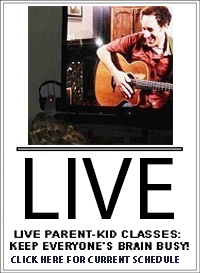The troubled history of South Africa may be difficult for your kids to understand . . .and is, in many ways, just as hard for grownups. How could a small number of powerful people legally dehumanize a majority, based solely on the color of skin? Though the concept seems almost unfathomable today, less than a generation ago South Africa’s Afrikaner-run government’s Apartheid legally segregated the nation’s races, forcing black South Africans to live separately and entirely unequally. One can surely draw parallels with American’s own long history of segregation; still, Apartheid as a legal system didn’t actually begin until the 1940s, when the Afrikaner-dominated conservative National conservative party came into power. Though South Africa’s first popular elections in 1994 ended formal Apartheid, the legacy of the system’s racism continues to influence the nation.
The brutality of Apartheid came to define South Africa’s history only after a several decade-long struggle between the British and the Boers, South Africa’s original Dutch, Flemish, German and French settlers, to control South Africa’s diamond and gold resources (discovered in 1869 and 1886 respectively). Though the British defeated the Boers in the 2nd Boer war (1899 to 1902) and in 1910 unified several republics to form South Africa, a British “dominion,” South African Boers continued to antagonize the British in order to become independent. In the ’40s the mainly Afrikaner Nationalist party won elections and set out to take hold of the nation by institutionalizing the formally unwritten rules of South African segregation.
Apartheid identified three distinct races–white, black and “colored.” Separation was strict and its effects devastating. Resistance to Apartheid was inspiring yet also devastating. There were street protests, labor strikes, sabotage, bombings and all sorts of violent and non-violent resistance. The African National Congress, the most popular resistance organization, employed both non-violent and less-than-non-violent approaches. The South African government fought hard to maintain control; it arrested the ANC’s Nelson Mandela in 1962 on charges of sabotage and kept him in jail for more than 27 years. Much to the government’s dismay, during that time internal and international anti-Apartheid activity increased. In 1990 the South African government finally yielded to domestic and foreign pressure, legalizing the ANC and releasing Mandela. In 1993 F.W. de Klerk and the ANC negotiated popular elections, which took place in 1994. An overwhelming majority elected Mandela as the nation’s first black president.
Today, South Africa is one of the most ethnically diverse and wealthiest of all African nations; its cities are modern, packed with skyscrapers and brimming with contemporary amenities. South African suburbs resemble those of American cities, full of shopping malls and international stores. The Truth and Reconciliation Commission, the astounding effort of Archbishop Desmond Tutu and other visionary South Africans to come to honest terms with the nation’s past without propagating its violence, still resonates with most as a positive step toward transitioning to a multiracial democracy. At the same time, millions of
impoverished South African dwell in the literal shadow of modern structures; a quarter of the population is unemployed and more than a third of South Africans live on less than two dollars a day. This wealth inequality is one of the many factors in the nation’s soaring crime rate, which serves as a constant reminder of Apartheid-era brutality, albeit with a less-easily defined enemy.
For more information:
Wikipedia on South Africa | About.com’s collected information on Apartheid | Overview of the anti-Apartheid movement (complete with interviews with anti-Apartheid activists) | What is divestment? | an NPR discussion of the Truth and Reconciliation Commission | link particularly for grown-ups: Mandela: freedom fighter or terrorist? (a discussion thread about Mandela’s early actions with the ANC)





Comments are closed.